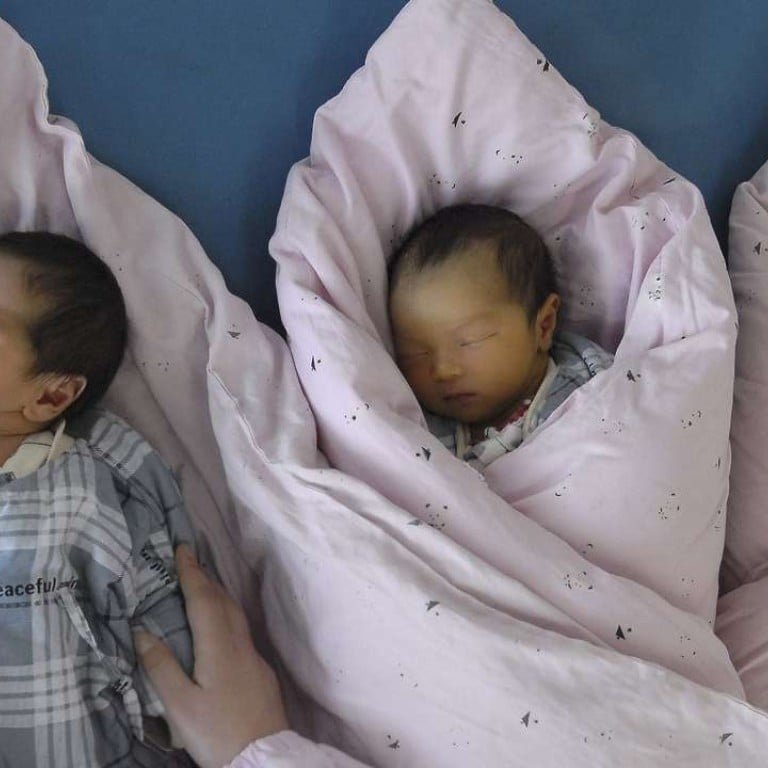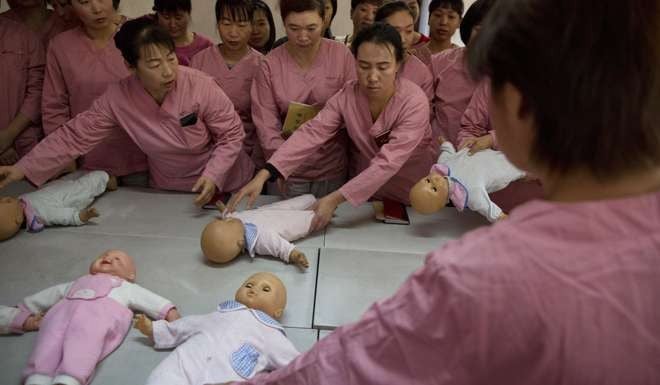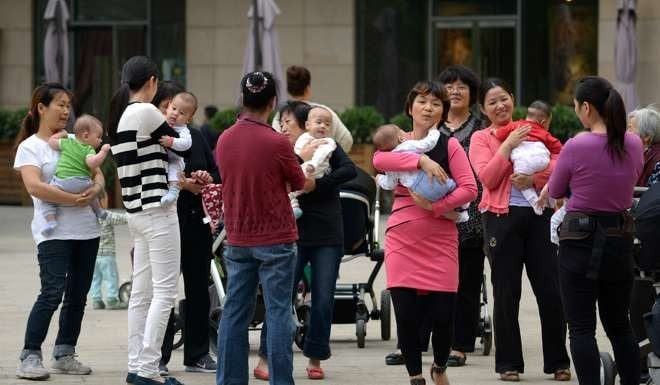
Why China’s two-child policy is failing the reality test
Stuart Gietel-Basten says it is little surprise that the shift has not sparked a major baby boom, as low birth rates have more to do with the lack of comprehensive support structures than parents’ reluctance to expand their families
For many demographers of China, this is little surprise. Studies have shown the underlying context of low fertility in urban China is not dissimilar to other settings in Asia, such as Hong Kong, Taiwan and South Korea. These drivers include high living costs (especially housing), fragile work for younger people, weak state support, high levels of gender inequality and a work culture that is not family friendly.
China’s new two-child policy legislation formally comes into force

China’s two-child policy ‘too little, too late’ demographers warn
When we say that something is “too low” or “too high”, this clearly assumes that there is some “optimal” figure to aim for. In terms of fertility, it is often implied that this is the so-called “replacement rate” where conditions of fertility and mortality mean that populations can replace themselves. In advanced economies such as China, this means a fertility rate of just over two children per woman.
The characteristics and productivity of the Chinese workforce in 2035 are going to be just as important as its total size
Yet, all of this seems a little arbitrary. The key reason for increasing fertility is, supposedly, that it reduces dependency – namely the burden of distributing resources from the working-age population to the older population. However, the critical point to remember is that children born today will not be entering the labour market for at least 16 years – maybe 20. As such, in order to have any effect on dependency ratios, a multi-decade perspective must be taken. To assume that other factors will not change in relation to productivity, the characteristics of the workforce and so on, especially in the context of huge improvements in education and skills, is naive at best.
Watch: Uptick in births after China relaxes one-child policy
In other words, the characteristics (and hence the productivity) of the Chinese workforce in 2035 is going to be just as important – if not more so – as its total size.
This point really goes to the heart of what the “right” fertility rate is. The number of people is much less important than their characteristics – whether they are well educated, more highly skilled, show an entrepreneurial spirit, and so on.
Couples in China would like to have two children. But the practicalities of life mean this is either unfeasible, or that the sacrifices required are too great
Crucially, though, it is also important to examine the flip side of the coin. While the productivity of the working-age population can be just as important as its size, so too can the characteristics of the older population. Sure, the Chinese pension system needs radical reform; and a sea-change is required to tackle old-age poverty. But, we shouldn’t forget that China has some of the highest personal savings rates in the world. Also, for its income level, the health of older Chinese is good on a global comparison.

Five things you need to know about China’s one-child policy

Once a one-child-policy wonder, which Chinese city is now urging party members to have second baby?
Yet, this macroeconomic perspective can easily leave the human dimension behind. Couples in China, as in Hong Kong and South Korea, would generally like to have two children. But the practicalities of life mean this is either unfeasible, or that the sacrifices required are too great. Too often we think about this in terms of a “national problem” that needs to be “fixed” through state interventions.
These interventions are usually couched in the language of “encouraging people to have more babies”. The evidence from places such as Singapore suggests that such policies will only ever achieve a limited success. This should be an important lesson for China, whose State Council is currently considering such pronatalist measures.
If we view low fertility as a symptom of broader problems in society ... perhaps we can see the way forward differently
On the other hand, if we view low fertility as a symptom of broader problems in society; of malfunctions in work culture or the housing market; of cultural institutions which have failed to keep pace with social change; of frustrated aspirations, perhaps we can see the way forward differently.
People do not have babies because the state encourages them to do so. Yet, people want more babies. Only by better understanding the reasons for this gap between aspirations and reality, and planning comprehensive policies to help bridge this, will fertility ever be increased.
Will more paid leave encourage parents to have more babies? Most Chinese provinces think so
But, remember, this is not about increasing fertility for the sake of the state; for the sake of some macroeconomic model of the optimal fertility rate or the relationship between workers and pensioners. This is about allowing citizens to realise their aspirations. Surely this, at the end of the day, is truly what the state should be aspiring to achieve.
Stuart Gietel-Basten is currently Visiting Professor of Social Science at the Hong Kong University of Science and Technology

